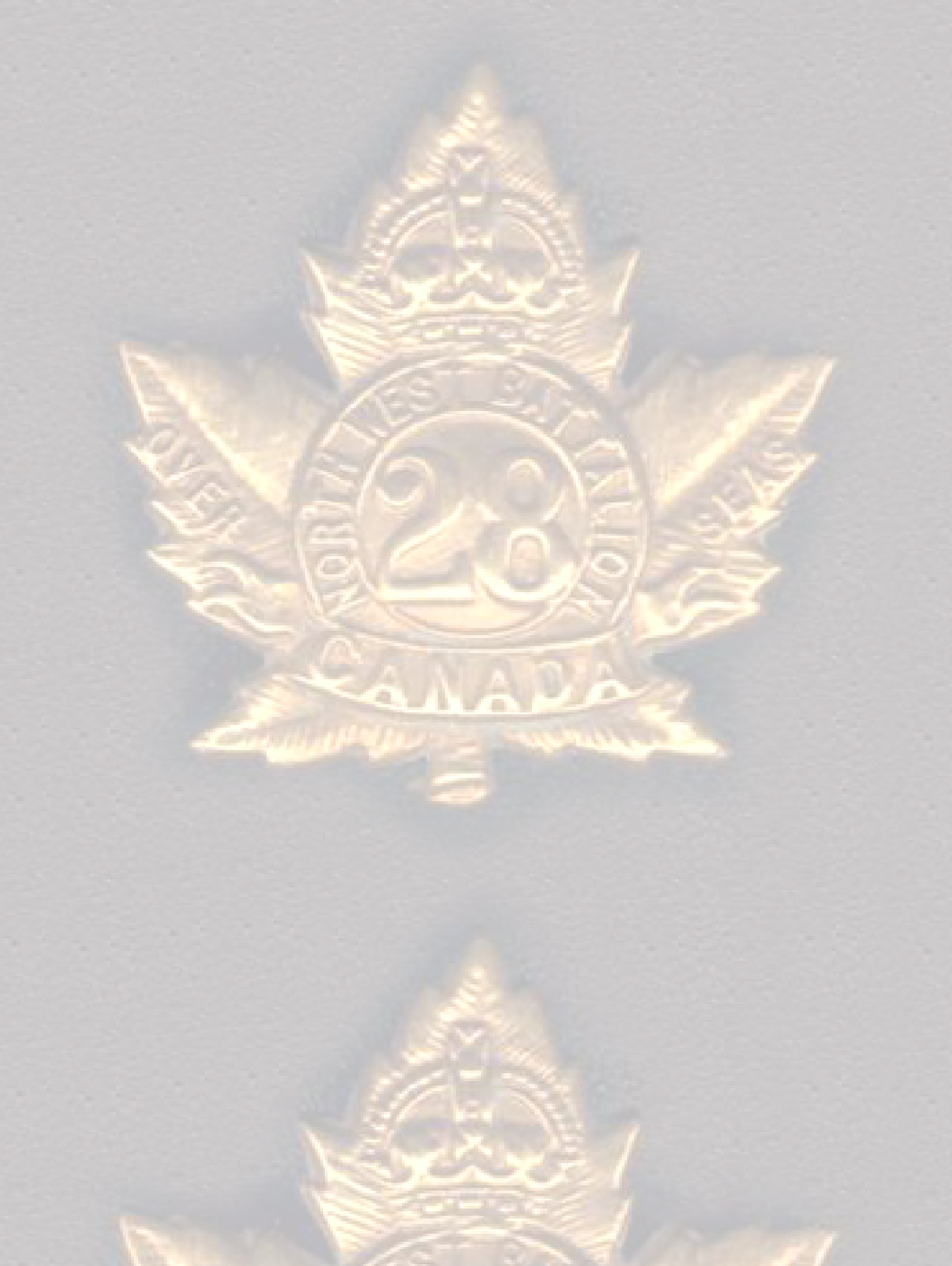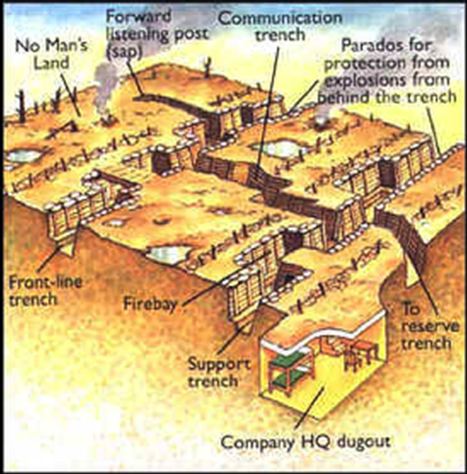
The War Diary of Lieutenant William L Hayes M C
1915—1919
The Canadian Army at the beginning of the Great War consisted of one full time regiment of 3110 men (the Royal Canadian Regiment under British Command). By the end of the Great War there were 4 Divisions (a fifth was created in 1917 but broken up the following year and used as reinforcements).
The structure of the Canadian Army — and most others of the Allied force — was based on that of the British Army of which it was effectively a part. An army consisted of 2 or more Corps and there were 3 British Armies involved in the conflict — a total of nearly 4,000,000 men in 70 divisions.
The Canadian Expeditionary Force, in effect a Corps, consisted of 100,000 or more infantrymen with added specialised troops under the command of a Lieutenant General.
Front Line Arrangements: Not all of the Army’s soldiers were in the front lines all at once or all of the time. A great deal of attention was paid to rest, training, and re-equipping the troops.
Divisions were the main fighting force sent to undertake a battle or task. One or two of the Division’s Brigades (depending on the scale of the task) would be ordered forward, the others remained in support or reserve positions. From within each of those Brigades, the Battalions were arranged similarly, one or two in the conflict area, the others in support or reserve. Of a Battalion’s (Bn) four Companies (Coys), two would be in the front line, one behind it in support trenches and one well to the rear in reserve to be called upon as required.
Thus of the 20,000 men in a Division, as few as 1000 were in the front line or support trenches at any one time. They would be there for 5—8 days before rotation. Not all of this time was spent in active combat. Therefore, most men spent most of their time behind the lines. For this reason 9 out of 10 men survived the war. So perhaps the question is not why so many died, but rather why so many survived?
This does not in any way diminish the losses, but there was a great deal of ‘being in the wrong place at the wrong time’ that determined a soldier’s fate.
In addition to Infantry, a Corps had associated artillery, headquarters, veterinary services, labour units, medical services, communications/signals, engineers, sometimes tunnelling units, mounted units and others, some formed as battalions, others as companies, but all under the command of the Major General.
The numbers varied depending on losses, specialist attachments and so on, but by 1918 630,000 Canadian men and women had joined up.
This Diary follows the 2nd Division, 6th Infantry Brigade, the 28th Battalion and its D Company. (The 1st, 2nd, 3rd Infantry Brigades were part of the 1st Canadian Division, the 4th & 5th Brigades were also part of the 2nd Division. The 7th, 8th, 9th were part of the 3rd Division, and 10th, 11th, and 12th, part of the 4th Division.)
The Division, Brigade, Battalion and Company each had its own Headquarters - the Company Headquarters being closest to the front line. These HQs moved as the battles progressed, receiving messages continually and monitoring and amending the action. Far from being in safe and secure locations with respect to the dangers around, the HQ and the officers were very much in the action. The average life span of a British officer in the front line was said to be a mere six weeks. Quite apart from the action in the front line, there was considerable movement between the rear sections and the front: communications, medical, rations, equipment, munitions, men in rotation, reinforcement or evacuation were constantly moving through the communication trenches.
|
Structure
|
Consisting of
|
Commanded by
|
Sub-divided into
|
|
Division
|
20,000 men
|
Major General
|
3 Infantry Brigades
|
|
Brigade
|
5,000 men
|
Brigadier
|
4 Battalions
|
|
Battalion
|
1,500 men
|
Lieutenant Colonel
|
4 Companies
|
|
Company
|
250 men
|
Major
|
4 Sections
|
|
Section
|
65 men
|
Lieutenant
|
4 Platoons
|
|
Platoon
|
10+ men
|
Sergeant or Corporal
|
|

https://line.17qq.com/articles/ndgdkmppv_p3.html

